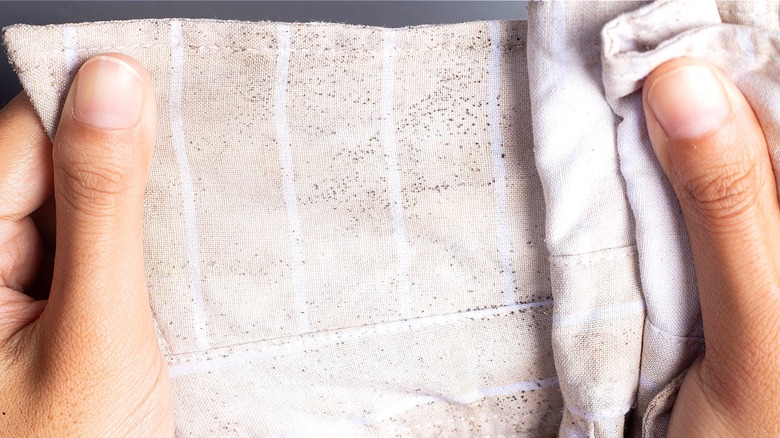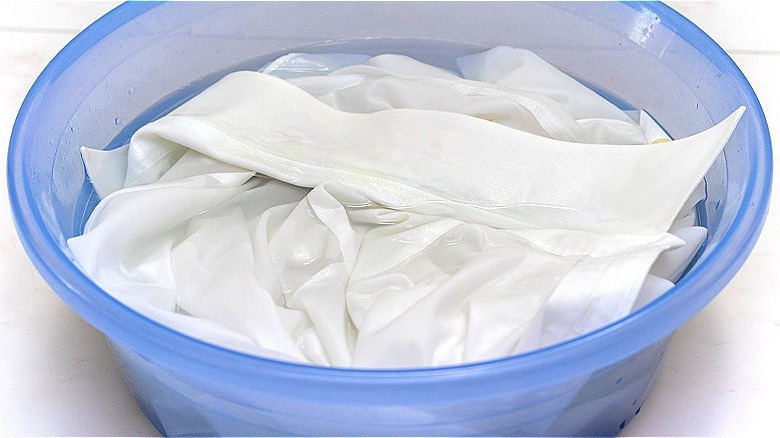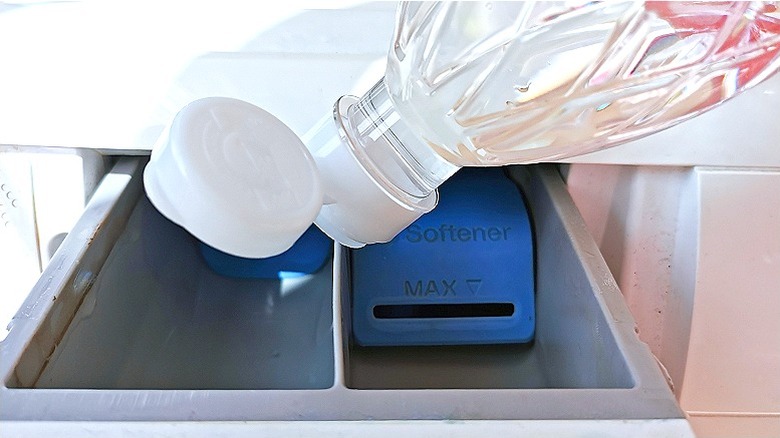The Best Way To Save Mold-Stained Clothing
Mold is present in many environments, but when left to grow and thrive in the right space, it can become a health risk. Mold spores can hide well, even deep in the fibers of clothing. While there are numerous strategies to get the mildew smell out of the laundry, the stain they leave behind can be a frustrating result, especially when it happens on your favorite shirt. Vinegar is one of the most effective and natural ways to get rid of mold stains from clothing. Used along with a few other steps, it can help you to remove all traces of the troublesome spores.
Mold stains can be challenging to remove, and some of the effectiveness of any method depends on the type of material and how long the stain has been on the clothing itself. Vinegar works as a mold remover because of the chemical reaction created. Keep in mind that, like with any laundry, you must follow the instructions for the water temperature and cleaning cycle provided by the manufacturer. Otherwise, you'll likely shrink or damage the item even if you remove the stain.
Especially for those who are sensitive, mold can be dangerous to your health. Whenever you're dealing with it or disturbing it, as you will do in this process, you should wear respiratory protection and keep the windows open to ensure good airflow. Mold spores can easily spread throughout a laundry room the more you disturb them, which only perpetuates the problem.
Pre-treat mold-stained clothing with vinegar
Mold spore stains on fabric often look like small, black dots. If you've just found mold on the clothing surface, assume the spores are active and growing. To kill the mold as a first step, you'll want to lay out the clothes with mold outdoors in the sun (if possible) to allow it to dry fully. Avoid putting it into the dryer as that'll set the stain. If that's not possible, put on gloves and a mask and then create a pre-treatment.
The pre-treatment should contain a bucket of warm water along with a full cup of white vinegar. Place the garment into the bucket so it's submerged. Allow this to sit for a full hour, at least, to allow the vinegar to penetrate the clothing, kill the mold, and start loosening the stain.
Once the clothing sits, use a clean brush to apply direct pressure to the spore stains. Rub enough to remove the stain, but don't put so much pressure on the area that you cause damage to the fibers. This process should remove or loosen most of the stains. If you still see a significant number of black areas adhering to the surface of the material, dump out the water, rinse the garment, and then repeat the process. You can also add borax to help encourage the stain to lift off.
Launder away mold spore stains
After the pre-soak and rinsing of the garment, it's still necessary to launder the clothing to fully remove the stain and kill the mold. Vinegar can again be one of the easiest ways to ensure the mold staining is removed. If the clothing label says it's possible, launder the item in hot water to help remove any debris from the stain or mold spores. If hot water isn't advisable, use the warmest water allowable. Put the clothing into the wash alone to ensure the mold doesn't spread any further. Then, add a cup of white vinegar to the drum with the clothing. If you can wash your clothing on multiple cycles, ensure more vinegar is added on the second cycle as well.
There are times when this may not fully remove the stains. That could be due to a stain that's been present for a long time. You can repeat the process to determine if that helps. Once the clothing is clean and stain-free, you can put it through the dryer, though it's best to place it in direct sunlight. If the stain remains, the mold itself is likely dead. You may be able to dye the clothing to hide the remaining evidence.
Before moving on, consider that mold could be hiding in any area. Therefore, it's critical to launder any other clothing, blankets, towels, or other fabrics in a similar way if you suspect mold is present, to kill the mold and remove the spores. Learn to identify mold in your home to get rid of it properly.


